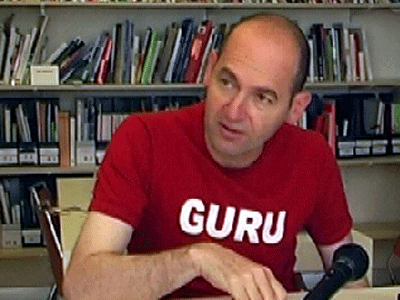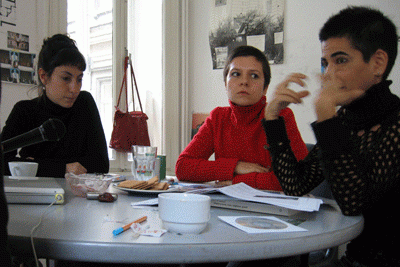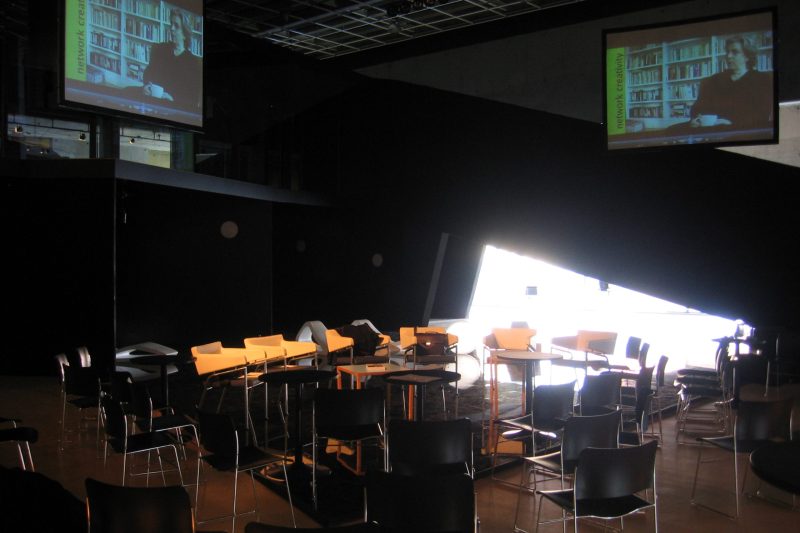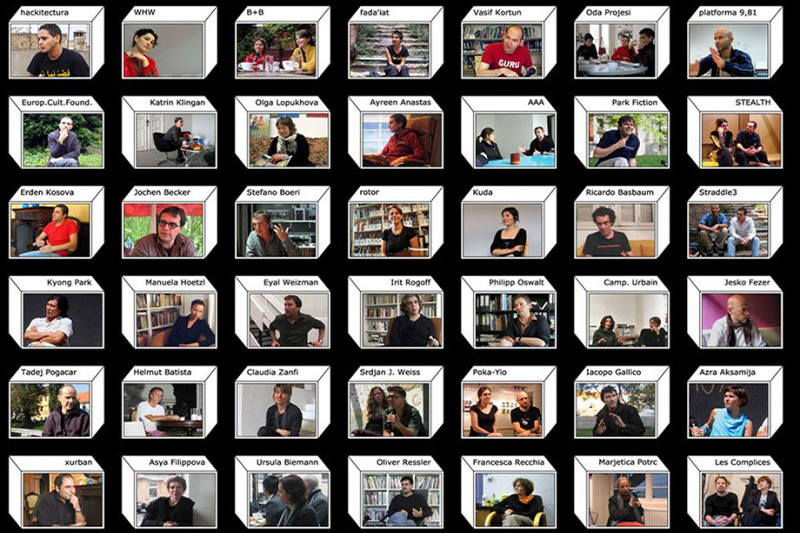- Interview
- Istanbul
- 2007
- NETWORKED CULTURES
conversation with Vasif Kortun
PM/HM: Istanbul has become a very popular site in the recent discourse on contested urban spaces, particularly in the art world. When you curated the 9th International Istanbul Biennial together with Charles Esche in 2005, you decided to use this opportunity to produce a biennial for and about Istanbul. What was the idea behind this decision?
Vasıf Kortun: The international community was welcome, but the exhibition was first and foremost for the residents of Istanbul. At the time we were operating in the districts of Galata, Beyoğlu and Tophane. These parts of the city are undergoing “urban regeneration” and have become a main dumping site for event culture and entertainment. And then there is another district, right near us, behind the Platform Garanti Contemporary Art Centre, separated just by an avenue with a barrier in between. The barrier effectively eliminates the possibility of pedestrian flux for hundreds of metres in the epicentre of the city. This is the Tarlabaşı district where people live in different conditions with a different economy and different ethnic composition. It’s literally on “the other side of the tracks”, as Americans would say. There’s a lot of research being done on Tarlabaşı, because it’s convenient: you can always just drop by and then return to the smug comfort of Beyoğlu. Since the last master plan for Istanbul was drafted, the city has undergone radical restructuring and part of this restructuring has given us a new and divided city. The Biennial took note of this on the urban level (Solmaz Shahbazi) and with regard to how it has affected people (Mario Rizzi).
The Biennial was, in fact, more about situations between individuals and the artist than about larger conditions. This was also why we wanted to make the exhibition “disappear” into the city and chose small buildings, as well as asked people to navigate and walk through places that they would not normally go to. Obviously, there were a few issues here. We wanted to address the fatigue felt with regard to biennials and their exhibitions in the 1990s: itinerant curators and itinerant artists – and new-economy knowledge workers who went from one place to another, and the knee-jerk reactions to the cities they knew little about. We wanted to get away from such responses, especially because Istanbul could be read through a kind of exotic frame. People tend to see it as lying somewhere between the Orient and the Occident. Here we don’t understand these clichés about “East and West” or about being “between places”… So to prevent such non-reflective reactions to the city, we thought it would be much more important for people to come here and stay for a while, meet other people, read about the city and discuss with us, and then produce new works. Over twenty works were commissioned – works for which we thought it would be absolutely essential to slow down the pace. This fatigue with biennials also had to do with the number of artists in exhibitions. This kind of reinvention of the nineteenth-century world fair in the form of a biennial is problematic. It shouldn’t require a twenty-mile trek to see an exhibition, because then nobody will actually be able to see it all. Everyone just experiences the event. We decided to reduce the number of artists and give them a bit more presence as well as allow complex readings between the works themselves.
PM/HM: To pick up on that, what cultural and urban urgencies of present-day Istanbul did these works address?
Vasıf Kortun: You know, Istanbul has just entered this unfortunate global city race and it’s making large segments and various lifestyles of the city invisible. This is because it’s all about cleansing and regulating, and since that’s what it’s about, the idea is to eliminate the (self)-representation of large parts of the city. The city is becoming a label and it’s being marketed as such. It’s a radical top-down transformation. This process neglects the most important and most interesting aspect of the city: its ad-hoc organic development and individuation in so many different zones. In terms of how we think of our cities, we haven’t fully realised the potential of “positioning” as opposed to mapping. Or to put it differently, it’s not about deciphering the city, because Istanbul is actually a place where you can lose your bearings, as the actual, physical city itself is about disorientation. However, at the moment, a huge “vacuum cleaner” is moving through the city.
PM/HM: What kind of counter-geography might be mobilised through active engagement with such disorientation in the urban field? And could this have an effect on the global distribution of network practices?
Vasıf Kortun: I don’t know how to answer that question. I operate from a particular zone in the city, one that is supposed to be the most public zone in the city, and yet this zone is actually in many ways not accessible to most of Istanbul’s residents. Moreover, if you are old or have a phobia about crowds or confined spaces, you can’t come here. The city spans too many miles for one Centre to answer cultural needs. Many new communities and recent immigrants to the city have never even seen Beyoğlu or Galata, let alone the Bosporus. Coming back to your question, in recent years, immigration patterns have changed from how they previously were, for example, people once migrated to escape war in eastern Turkey. But today it’s no longer possible for such people to be the architects of their own fortunes, because the government doesn’t tolerate illegality anymore – and in the past this was a decisive factor in this self-made city. Certain districts are being destroyed because they’re Roma neighbourhoods or they’ve a high density of “undesirables”. NGOs are reacting to these processes, but in the end all that can be salvaged are memories and stories. Istanbul isn’t a city, but actually many cities loosely connected to one another. It’s an agglomeration of villages and communities, strung together. I’m perhaps not the right person to address on networked practices. We might be able to house people and make them more visible or elevate them to another level of discussion, but we’re by no means on firm ground here.

Vasıf Kortun
is a curator and the director of Platform Garanti Contemporary Art Center, Istanbul. His texts have appeared in many different books, magazines and exhibition catalogues. Szene Türkei: Abseits aber Tor, a book on Turkey co-authored with Erden Kosova was published in 2004. The co-curator of the 9th Istanbul Biennial in 2005, Kortun received the 9th annual Award for Curatorial Excellence given by the Center for Curatorial Studies at Bard College in 2006.


